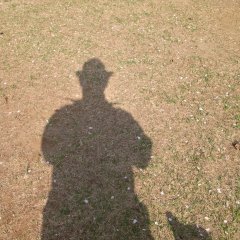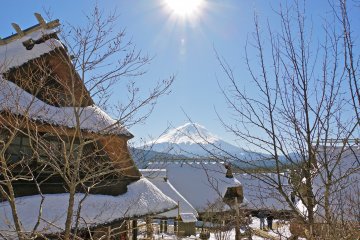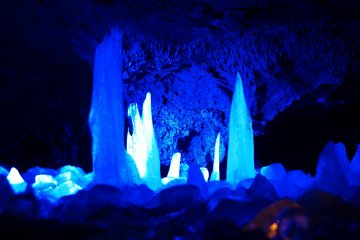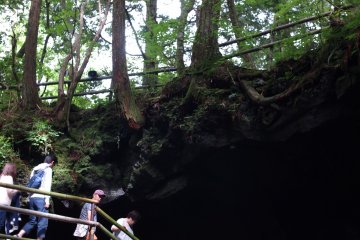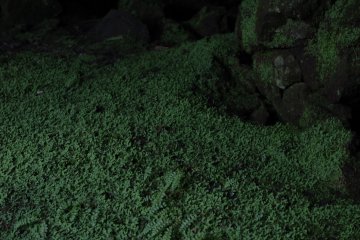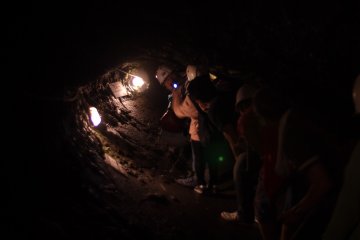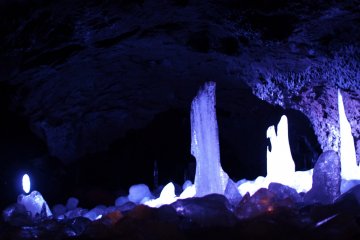Mt. Fuji has been keeping a secret!
At the northern foothills of the great volcano, amidst the Sea of Trees (Aokigahara Jukai), not far from Lake Sai, there are some caves sculpted by burning lava thousands of years ago. In two of these caves, even in the scorching heat of summer, Fujisan has been quietly keeping some kind of jewels --- there are tons of blocks of ice resting underneath the sleeping volcano. One place to find them is at the Narusawa Ice Cave (鳴沢氷穴).
Descending into the cave, you can immediately feel you are getting into a kind of refrigerated enclosure. In sharp contrast to the muggy atmosphere outside, as I carefully tread down the spiraling steps, I felt the refreshing if not invigorating natural coolness of the stone cave. Before the advent of tourism, it must have been completely dark inside. But now of course, the place is illuminated appropriately at every nook and cranny for tourists like me.
Touching the blocks of ice, looking at the icicles and other formations on the ceiling, I couldn’t help but wonder at the strangeness and beauty of nature.
It is said that three hundred years ago, these blocks of ice were transported and offered as a gift to shoguns. What would they have done with it? Make the sweetened green-tea flavored shaved ice dessert called kakigōri (かき氷)? I wondered.
One practical function of the caves, according to local literature, was it served as cold storage for important seeds and plants. During the winter, it was an ideal place to store seeds of crops for the spring planting season.
As I emerged out of the cave, the summer heat hit me in the face. I had just discovered a secret.


